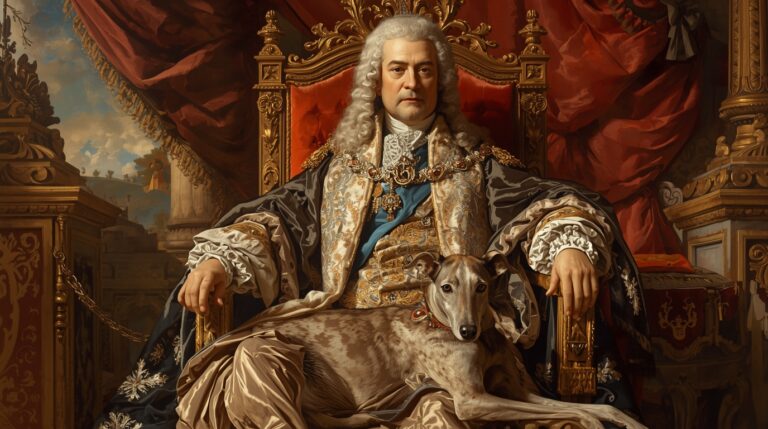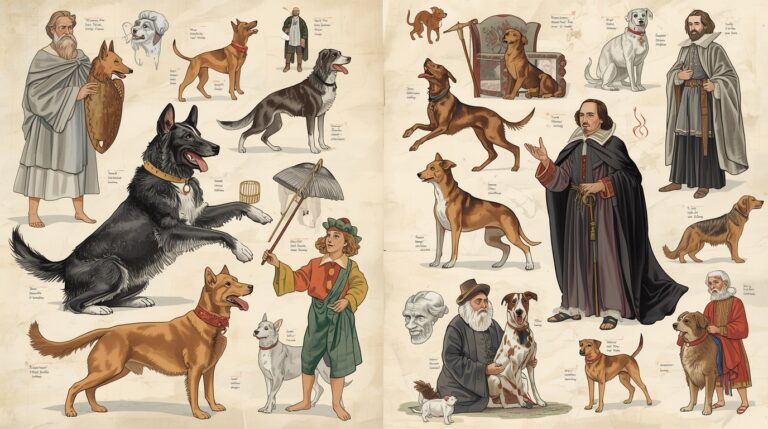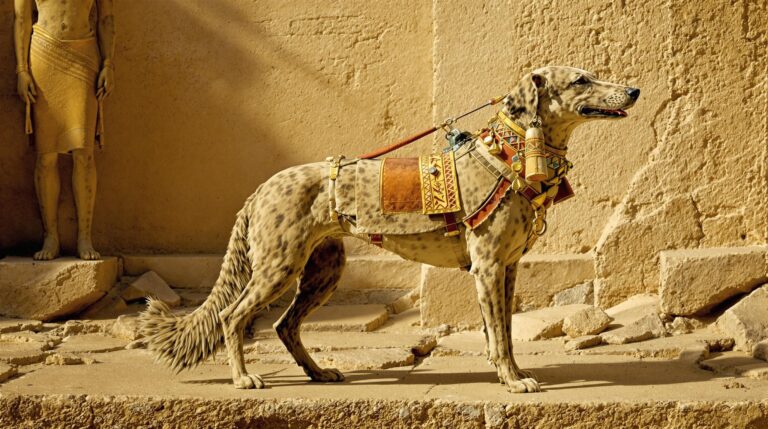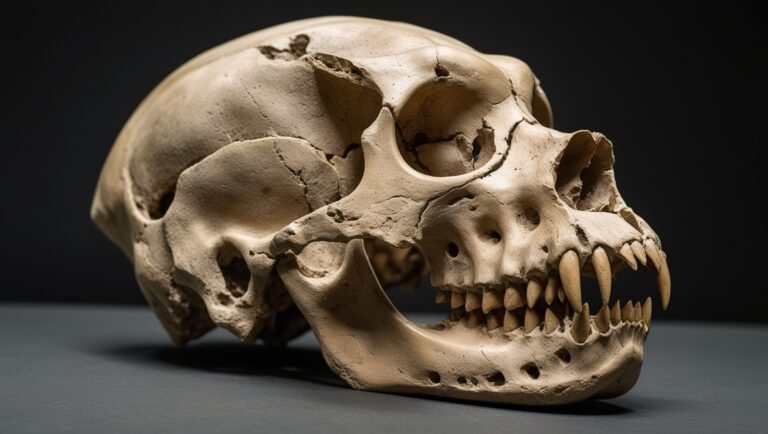Dogs in Christian Symbolism
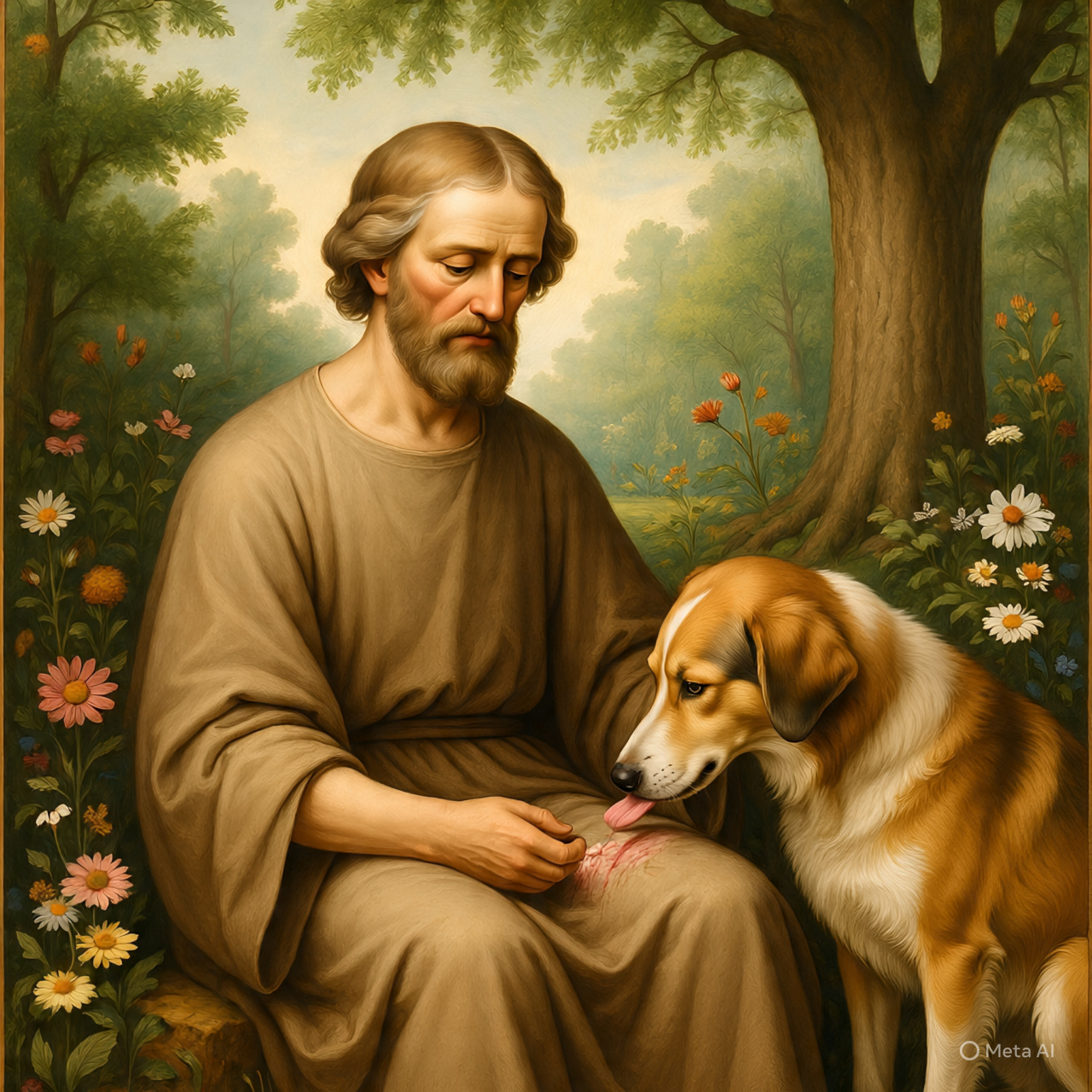
Introduction
In Christian tradition, the dog is a paradoxical figure—at times a symbol of impurity and judgment, and at others a model of loyalty, protection, and spiritual fidelity. While often overlooked in theological discourse, dogs appear repeatedly in the Bible, Christian iconography, saints’ legends, and medieval religious texts, revealing a profound transformation in how dogs were perceived—from scavengers to sacred companions. This article explores the evolving symbolic role of dogs in Christianity, analyzing scriptural references, hagiography, iconographic trends, and moral allegories.
Dogs in the Bible: Early Perceptions
Biblical references to dogs are surprisingly numerous, but often negative. In the Old Testament, dogs are associated with impurity, aggression, and danger. For example, 1 Kings 14:11 warns that “dogs shall eat whoever belongs to Jeroboam and dies in the city,” emphasizing their role as unclean scavengers. In Psalm 22:16, “dogs surround me, a pack of villains encircles me,” metaphorically depicts persecution and suffering.
In the New Testament, the perception softens slightly but retains caution. In Philippians 3:2, Paul warns, “Beware of dogs,” referring metaphorically to heretics or morally impure individuals. These references reflect the cultural context of the time, where dogs roamed as semi-wild animals and were rarely domesticated in the way they are today.
The Symbolism of Dogs in Biblical Texts
In biblical language, dogs symbolize spiritual uncleanliness, judgment, or persistent evil. In Deuteronomy 23:18, offerings gained through “the price of a dog” are forbidden, believed to reference earnings from idolatrous or immoral practices. Dogs are also used to illustrate judgment against sinful people or nations, as seen in Isaiah 56:10-11, where leaders are likened to “mute dogs that cannot bark.”
However, these interpretations do not mean the Bible outright condemns dogs as creatures. Instead, they reflect symbolic language that draws from contemporary animal behavior to express theological ideas.
The Parable of Lazarus and the Rich Man
One of the most striking biblical references to dogs appears in Luke 16:19–31, in the story of Lazarus and the Rich Man. After being ignored and mistreated, Lazarus is described as so destitute that “even the dogs came and licked his sores.”
Early Christian theologians interpreted this action not as another humiliation but as a moment of mercy and recognition. The dogs, often considered unclean, become the only ones to show Lazarus compassion. Some scholars argue that this moment foreshadows divine reversal—those seen as lowest on Earth (dogs) displaying divine qualities (mercy and care).
Book of Tobit and the Dog Companion
In the Book of Tobit—an apocryphal text accepted in the Catholic and Orthodox canons—the protagonist Tobiah sets out on a long journey accompanied by a small dog (Tobit 6:2). The dog’s presence is brief but notable: “The young man left with the angel, and the dog followed behind.”
Although the text gives no dialogue or dramatic role to the dog, its quiet companionship has sparked centuries of interpretation. Many see it as a symbol of divine guardianship, loyalty, and innocent guidance, especially in a story about healing, faith, and spiritual maturity. The dog follows the angel Raphael and Tobiah, metaphorically representing the Christian soul led by divine providence.
Saint Roch and the Healing Dog
One of the most beloved dog-related Christian legends is that of Saint Roch (San Rocco), a 14th-century saint invoked against plagues. According to tradition, after contracting the plague while serving the sick, Roch retreated to a forest to die. There, he was kept alive by a dog, which brought him bread each day and licked his wounds, eventually restoring him to health.
This story reversed earlier biblical dog symbolism. The dog became a miraculous healer, an agent of God’s mercy and survival. In Christian art, Saint Roch is almost always shown with a faithful dog carrying a loaf of bread in its mouth, often at the saint’s feet or by his side.
St. Dominic and the Dream of the Hound
According to Dominican tradition, St. Dominic’s mother had a dream before his birth. In the vision, she saw a black-and-white dog leaping from her womb, carrying a burning torch in its mouth, setting the world ablaze with divine fire.
This dream was interpreted symbolically: the dog represented the Dominican Order (Domini canes—”dogs of the Lord”), spreading the light of truth. This powerful allegory associates the dog not with impurity, but with evangelism, purity of doctrine, and divine mission.
Dogs as Symbols of Faithfulness
By the Middle Ages, Christian symbolism had begun to embrace the dog’s more positive traits—loyalty, vigilance, and humility. In medieval bestiaries—moralistic animal encyclopedias used to teach spiritual lessons—dogs were often described as loyal servants and symbols of unwavering devotion to Christ.
Dogs that followed their masters into danger or refused to abandon them were used as allegories for faithfulness to God, even in suffering. These ideas were reinforced in sermons, morality plays, and monastic teachings.
Dogs in Christian Art and Iconography
In early Christian art, particularly in the catacombs of Rome, dogs occasionally appear alongside martyrs, saints, or the Good Shepherd. By the medieval period, they become more common—especially in funerary art, stained glass, and illuminated manuscripts.
Dogs were often shown:
- At the feet of noblewomen or saints, symbolizing loyalty and virtue
- In scenes of martyrdom, representing protection or perseverance
- Accompanying pilgrims, reflecting spiritual journey and divine companionship
White dogs, in particular, symbolized purity, watchfulness, and divine grace, reinforcing their position as spiritual helpers.
also read this Dogs in Mythology, Religion & Folklore
Medieval Europe: Dogs in Monasteries and Hermitages
Medieval monastic rules often prohibited personal property, including pets. However, exceptions were made for dogs that served functional or spiritual purposes. In some hermitages and isolated monasteries, dogs provided security, companionship, and even acted as spiritual symbols of isolation and devotion.
Monastic texts describe dogs following monks to chapel, alerting them to visitors, or guarding sacred relics. Their presence was sometimes interpreted as divine confirmation of the monks’ holy calling.
Dogs and the Desert Fathers
The Desert Fathers, early Christian monks who lived in solitude in the Egyptian and Syrian deserts, wrote of encounters with wild dogs that guided, warned, or tested them. In some stories, dogs brought food to hermits during times of famine, mirroring the miracle of Saint Roch.
These stories portray dogs as agents of providence, appearing during trials as signs of God’s faithfulness and provision. Their simplicity and instinct were admired as models for Christian humility.
Christian Martyrs and Animal Symbolism
Early Christian martyrs were often associated with animals—lions, lambs, doves—but dogs occasionally appeared in their narratives. Some saints, especially those who wandered, were said to be followed or protected by dogs.
Tomb engravings from Late Antiquity sometimes include dog figures at the feet of martyrs, symbolizing earthly loyalty that followed them into eternity. These depictions reinforced the dog’s role as a bridge between the material and spiritual worlds.
Dogs in Allegorical Literature and Morality Plays
In Christian allegorical texts like Piers Plowman and various morality plays, dogs appear as representations of moral qualities. A barking dog might symbolize conscience, a chained dog temptation restrained, and a loyal dog a faithful believer.
These metaphors were often used to teach Christian virtues to largely illiterate audiences. The dog became an accessible image for understanding complex spiritual concepts, such as vigilance, temptation, or repentance.
The Role of Dogs in Pilgrimage Culture
During the medieval period, Christian pilgrims often traveled long distances to holy sites. Dogs would accompany some of them, either for protection or companionship. Over time, this practice took on symbolic meaning.
In religious poems and guides, the dog represented the soul’s endurance and fidelity in the face of temptation. Images of pilgrims with dogs were also common in art, emphasizing the unity of body and soul, and the guidance of divine companions.
Dogs in Christian Funerary Art
From the 13th century onward, many tombs and memorial sculptures include dogs carved at the feet of the deceased, particularly noblewomen and clergy. These figures were not decorative but symbolic of the person’s fidelity to God.
White dogs symbolized purity and constancy, while black dogs were sometimes used to show spiritual struggle overcome through divine grace. Their inclusion suggested that even in death, the individual remained faithful and watchful for Christ’s return.
Dogs in Christian Dreams and Visions
Throughout Christian mysticism, dreams involving dogs were interpreted through various lenses. A gentle or guiding dog often signified divine protection or an angelic presence. An aggressive or shadowy dog could represent sin, temptation, or spiritual attack.
Mystics like Saint Bridget of Sweden and Saint Hildegard of Bingen recorded visions involving animals, including dogs, to symbolize moral struggle or divine instruction. These visions emphasized the dog’s symbolic fluidity—sometimes warning, sometimes guiding.
Transformation of Dog Symbolism Over Centuries
Christian thought gradually transformed the dog from a symbol of impurity to one of redemptive loyalty. This shift reflects broader theological movements—from Old Testament legalism to New Testament grace, and from Roman pagan influences to Christianized medieval culture.
Earlier associations with death and judgment gave way to narratives of companionship, fidelity, and divine mercy. This mirrored the Church’s growing emphasis on individual piety and emotional expression during the medieval and early modern periods.
Canine Metaphors in Christian Sermons
Preachers in the early Church and Middle Ages often used dogs as metaphors for spiritual ideas. In Philippians 3:2, Paul warns against “dogs” as a figure of false teachers, drawing from common cultural perceptions.
Yet, in many homilies, the dog also represents:
- The soul’s longing for God, as it “pants like a deer” in Psalm 42
- The watchman of the spirit, alert to demonic attack
- The humble follower, never leaving its master’s side
These sermons helped evolve the public perception of dogs into models of Christian virtue.
Modern Christian Reflections on Dogs
In recent decades, questions have arisen about the place of animals, particularly dogs, in Christian theology. While traditional doctrine does not explicitly teach that animals have eternal souls, many modern Christians believe that dogs embody aspects of divine love—unconditional loyalty, joy, and service.
Dogs now play roles in pastoral counseling, grief support, and animal-assisted therapy. Churches even hold pet blessings on the Feast of St. Francis of Assisi, celebrating the spiritual role of animals.
Conclusion
The dog in Christian symbolism reflects the journey from judgment to redemption, from unclean scavenger to saintly companion. Through scripture, legends, art, and sermons, the dog evolves into a powerful symbol of faithfulness, humility, and divine presence. Whether licking the wounds of Lazarus, guarding a churchyard, or journeying beside saints and pilgrims, the dog stands as a watchful witness to the spiritual life—a reminder that even the humblest creatures can reflect the glory of God.

